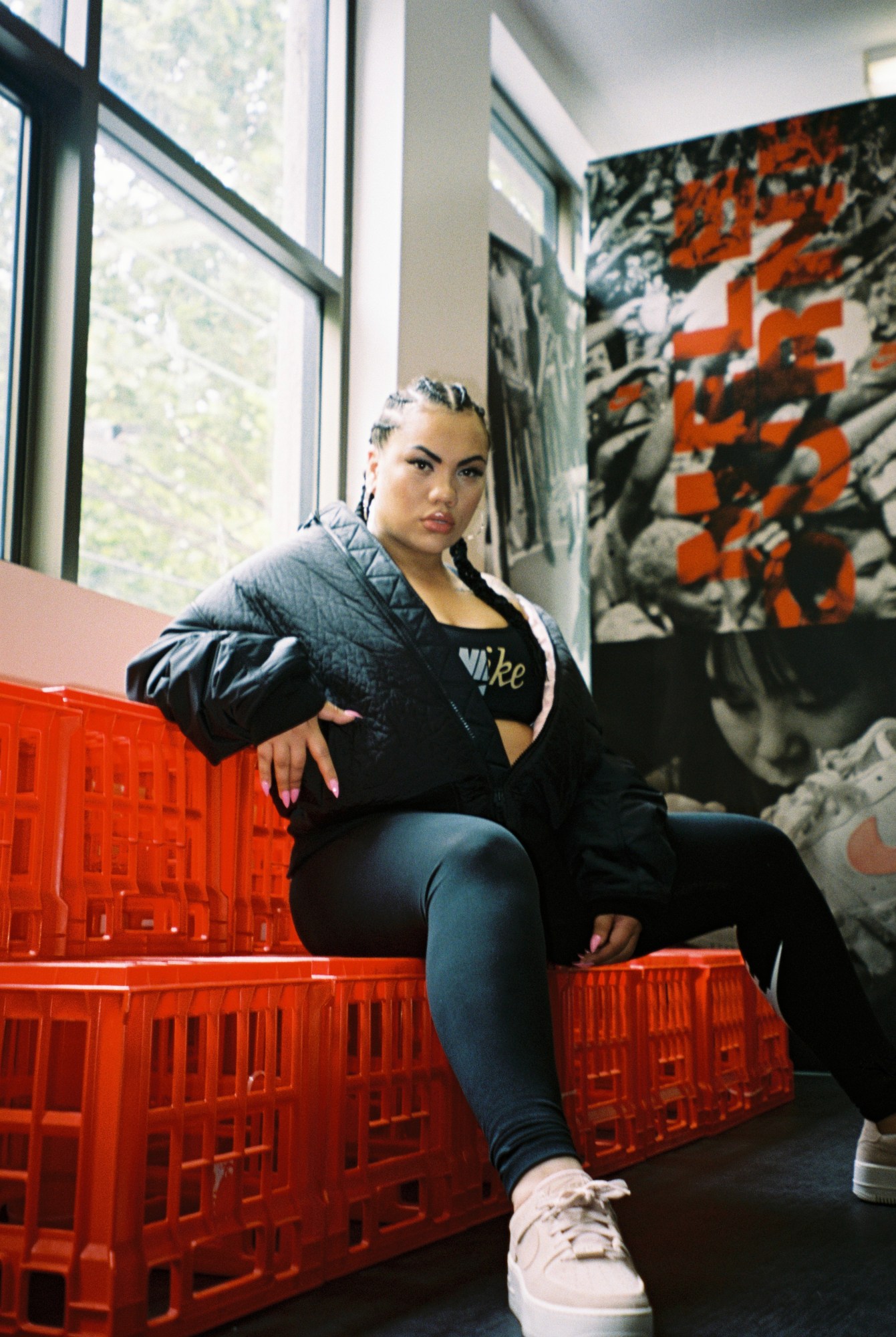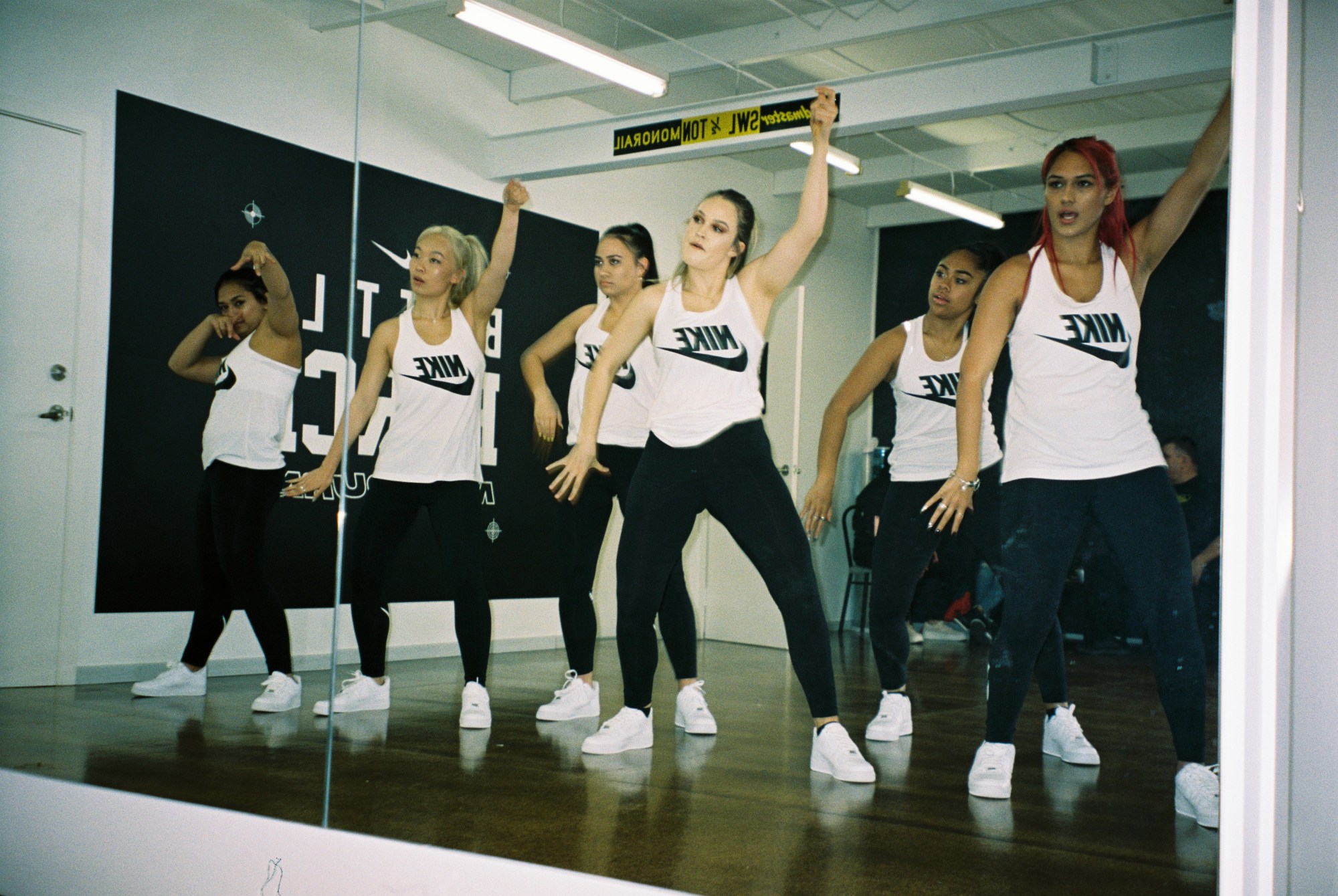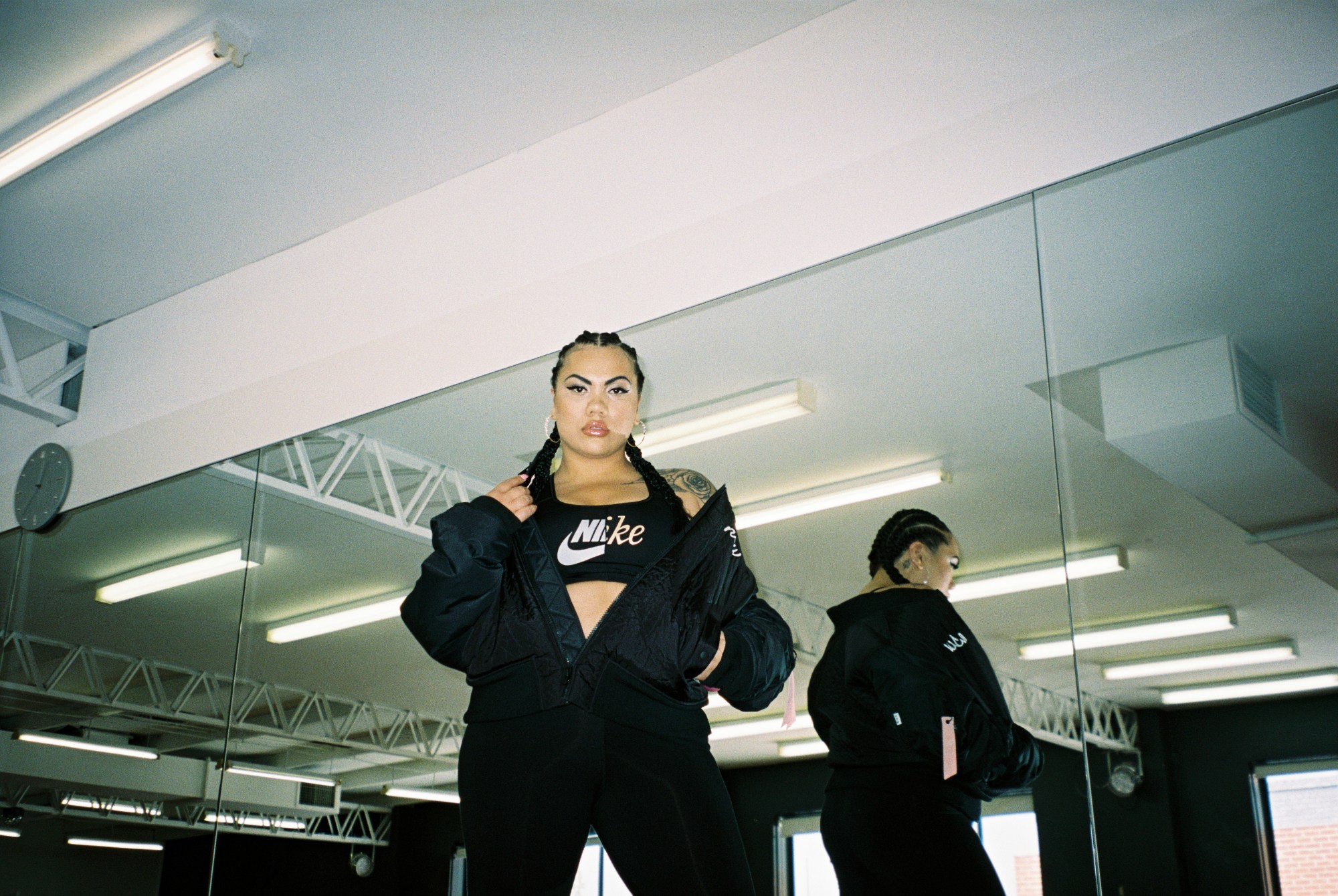Parris Goebel, aka Parri$, is the most in-demand choreographer in the biz. A true slashy, the Auckland-born singer, dancer and director left school at fifteen to set up her own hip-hop dance company. Now twenty-seven, she has worked with some of the biggest names in the industry: Rihanna, Nicki Minaj and most famously with Justin Bieber on the video for Sorry which has been viewed over three-hundred-million times. Recently Parri$ shifted her focus with the intention of helping inspire the next generation of female dancers. Teaming up with Nike on their Force is Female workshop, they’re giving a couple of young dancers the chance to perform with her and her talented ReQuest crew. We caught Parri$ during a rehearsal to find out what’s good in the dance world.
Why is empowering female dancers important to you?
Being a woman, it’s important that we celebrate and lift each other up. We’re stronger together and we hold so much power within us, this is our time. My chosen gift is dance, so I want to use my gifts and voice to bring women together, inspire them to be themselves, chase their dreams and to feel it.
What else have you been working on recently?
I just did Rihanna’s Savage show for NYFW. I got to choreograph and direct, so that was amazing. I also shot a video with Kanye West in Africa recently.

Sounds incredible, what was it like working with Rihanna?
It was one of my favourite jobs ever. I cast fifty females of all shapes and sizes and ethnicities, and we got to dance in our underwear. It was amazing! The process was really special too. I made the girls rehearse in their underwear so they’d be performance ready and being in front of each other like this was such a journey for them. You’d think because they were dancers, they’d be comfortable but I was surprised by how many weren’t. Over a couple of days, they became more confident in themselves and by the show they were a testament to loving yourself.
Where did you learn to dance?
I’m self-taught. I was born and raised in Auckland, New Zealand and there wasn’t a lot of hip-hop growing up. I’d just watch a lot of MTV and YouTube and teach myself.
Didn’t J-Lo discover you on YouTube?
Yes! I was posting my work on YouTube and she came across a video of mine and was like “we’ve got to get this girl”. So, they flew me over to the States.
That’s so cool. What has it taken to get where you are today?
I would say a lot of vision. Knowing what I want and trying new things as an artist, staying committed and repeating to myself positive messages. It’s been about not giving up and working hard every day, whether it’s in my bedroom or the studio… and opportunities have come my way.

I imagine finding a like-minded community of dancers was important too. How does hip-hop create a culture or family through dance?
Dance is such an expressive art form so it allows you to communicate your personality and emotions physically with those around you. You don’t have to speak the same language, or be the same age, dance and music brings people together. There’s something magical about it. For me hip-hop represents unity, it represents experience. Everyone goes through tough times but when we dance and celebrate it unites us. The performance or the movement takes our worries away. I’ve been friends with a lot of my crew for ten years and call them family, naturally you grown and learn together.
Besides dance, what inspires your movement?
For me it’s always the music, it’s a combination of what I’m hearing and what I’m feeling or where I’m at in life. I connect my mood to the music and create something from there. At the moment I’m listening to a lot of female R&B artists, Kali Uchis, Snoh Aalegra and Summer Walker.
What’s your creative process like when you choreograph?
I always work on the spot, I never really prepare. If I have a vision, I kind of tune out with the dancers and create on the spot. We learn it together as we go, so it’s a very organic, free environment. Everyone gets to experiment and I get to have a play. It’s a like a playground for me and the studio is my world. You get good at creating and being impulsive.

How has your choreography changed over time?
I’m more versatile, I create things that aren’t just urban or hip-hop. The choreography for Rihanna’s Savage show was more contemporary, with lots of free movement. I’ve grown as an artist and can create a fusion of styles.
Who makes up your ReQuest dance crew?
It’s everyone. We welcome and accept anyone and everyone. There’s no boundaries in my eyes.
You’re also a singer and director, how do you juggle all your creative ambitions?
What’s been cool about my journey is that everything has naturally flowed. I’ve just signed with a film agency in LA, so next year I should be doing a lot more films and getting into that world. It’s a huge goal of mine to direct dance films and musicals. But I think all the art forms work together, music and dance need each other, and I was just drawn to directing. I’m passionate about everything, everything artistic.
